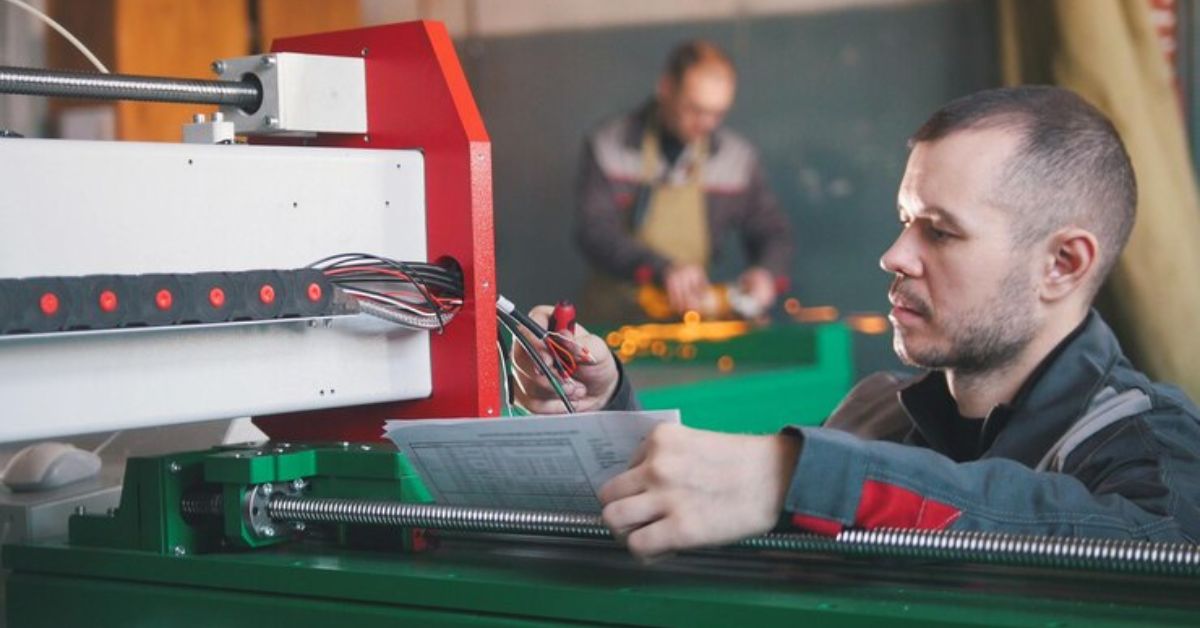Fabrication is key across industries, from automotive to consumer goods, relying on cutting, bending, and assembling to transform raw materials into finished products. This article explores the principles, tools, best practices, and trends behind these core techniques, offering insights for professionals and enthusiasts alike.
Cutting
Cutting is the first and one of the most fundamental steps in any fabrication project. Its goal is simple—to separate a material into manageable sections that match your design specifications. Techniques like laser tube cutting can greatly enhance the quality, accuracy, and efficiency of your project, making it a key choice for precise and intricate designs. The tools and methods you select play a significant role in achieving the desired outcome.
Popular Cutting Methods
- Shearing
Ideal for quickly slicing through flat metal sheets using a powerful blade. Shearing excels in high-volume, repetitive tasks for straight cuts.
- Sawing
Bandsaws and circular saws are widely used for more complex or angular cuts. While slower than shearing, they offer excellent flexibility.
- Laser Cutting
High-powered lasers vaporize or melt material with remarkable precision, perfect for intricate patterns or tight tolerances. It is popular for metals, plastics, and even wood.
- Waterjet Cutting
These machines use a high-pressure jet of water (sometimes mixed with abrasive materials) to cut through a variety of materials without introducing heat, which is valuable for heat-sensitive projects.
Key Considerations
- Material Type and Thickness: Not every method works on every material. For thick steel, for example, plasma or waterjet cutting provides clean edges, whereas thin aluminum is well-suited to laser techniques.
- Quality and Accuracy Needs: For highly precise components, opt for CNC-controlled laser or waterjet cutting.
- Project Volume: Manual methods are effective for small batches, but larger quantities often require automated or high-speed solutions.
Modern fabrication shops often blend traditional and contemporary methods to strike a balance between efficiency, cost, and custom requirements.
Bending
Once your material is cut to size, the next core step is bending. The ability to shape flat sheets or rods into desired angles, curves, and forms unlocks a world of possibilities in design.
Essential Bending Techniques
- Press Brake Bending
A press brake is a precision machine tool for forming metal sheets or plates into set angles or radii. CNC press brakes allow for detailed, repeatable bends across a production run.
- Roll Bending
This method uses a set of rollers to curve metal tubes, pipes, or sheet stock smoothly. It’s vital for applications like tanks, staircases, or custom automotive parts.
- Hand Bending
Sometimes, a personal touch with a manual bending jig or even by hand using forming tools does the job, especially for prototypes or creative work.
Best Practices
- Know Your Material Limits: Metals can only stretch and compress so far before cracking or deforming. Always consult material specs before bending.
- Bend Radius Matters: Too tight of a radius may weaken your part, so standard industry guidelines help maintain structural integrity.
- Use Templates and Jigs: Consistency is key, especially in multiple-piece runs. Simple jigs can ensure every bend matches the last.
Correct bending not only provides function but can also enhance aesthetics, contributing to the strength and visual appeal of your final product.
Assembling
With individual parts shaped and formed, the final step is assembly. Here, the quality of connections determines the durability, longevity, and ultimate success of your project.
Common Assembly Techniques
- Welding
Fusing metals using intense heat. Techniques like MIG, TIG, and spot welding are common, each serving different material types and thicknesses.
- Bolting and Fastening
Mechanical fasteners, including bolts, screws, and rivets, provide strong, removable connections, ideal for parts that may need maintenance or replacement.
- Adhesive Bonding
Modern adhesives allow joining of dissimilar materials (like metal to plastic) and provide clean finishes for visible seams.
- Press Fitting
This technique uses mechanical force to press components together, creating a friction-locked assembly without external fasteners.
Key Points for Quality Assembly
- Surface Preparation: Clean, burr-free edges ensure strong bonds and reduce the risk of failure down the line.
- Alignment: Precision jigs, fixtures, and careful marking make sure everything lines up as designed.
- Inspection & Testing: Always perform stress tests and inspections to catch any weaknesses before your product goes out the door.
Well-executed assembly results in a cohesive, robust structure ready for its intended application.
Evolving Technologies
Innovations continue to expand the possibilities for fabricators. Automation is on the rise, with CNC machinery and robotic arms delivering unprecedented accuracy and productivity. Meanwhile, additive manufacturing (including 3D printing) is emerging as a complementary process, allowing rapid prototyping and complex geometries that traditional fabrication can’t achieve.
Smart materials and IoT-enabled machines further enhance precision, quality control, and even predictive maintenance for fabrication shops of all sizes.
Conclusion
From the initial cuts, through careful bending, to the final assembly, each step in the fabrication process plays a vital role in turning ideas into reality. Mastery of these techniques allows for both creative expression and reliable engineering, supporting industries and artisans alike.







